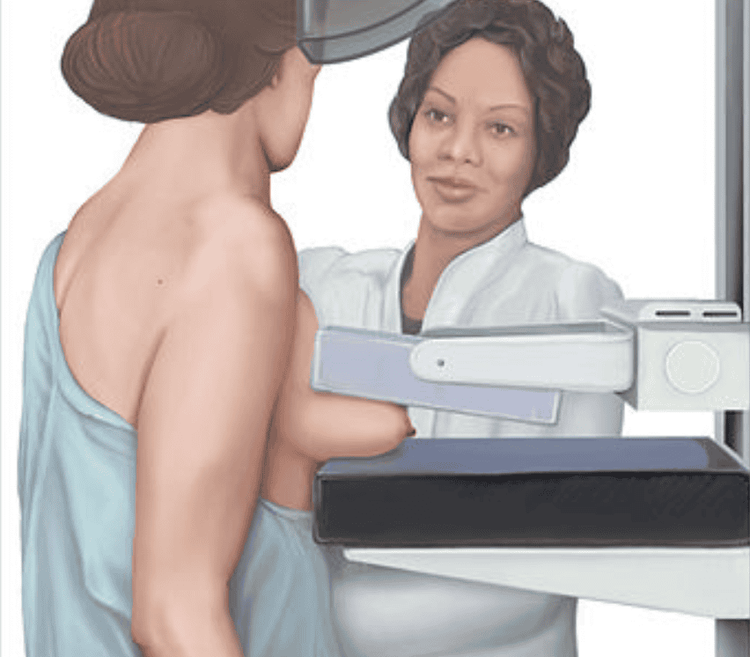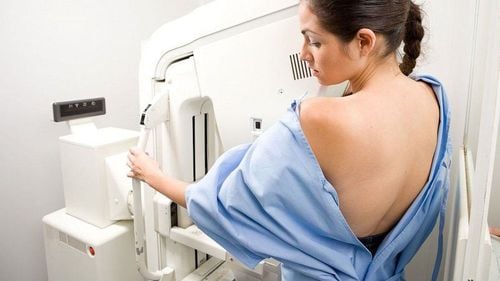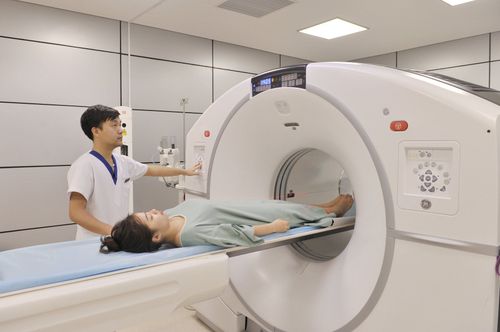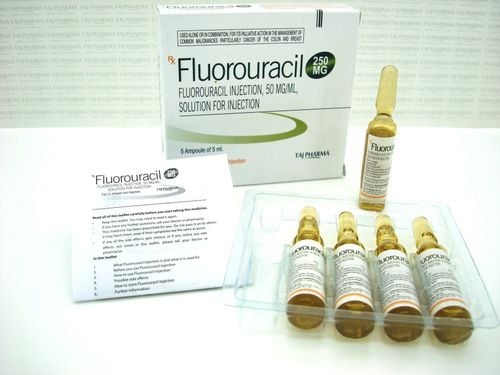This is an automatically translated article.
The article was written by Specialist Doctor II Phung Thi Phuong Chi - Oncologist, Oncology Center - Vinmec Central Park International General Hospital.Breast hyperplasia is a benign breast condition that usually causes no symptoms such as pain or lumps and is often discovered incidentally. It occurs when certain cells lining the surface of the ducts or lobules of the mammary gland proliferate. Tubular hyperplasia can be either typical or atypical ductal hyperplasia depending on the histological appearance on microscopic examination.
When mammary gland hyperplasia occurs in the lobules (cells that line the milk glands) it is called lobular hyperplasia of the mammary gland. The frequency of lobular hyperplasia and ductal hyperplasia of the mammary gland is similar. And the risk of developing breast cancer is similar.
1. Common (typical) mammary gland hyperplasia
Common breast hyperplasia is the most common form of breast hyperplasia. In normal mammary hyperplasia, cells are observed to be proliferating in number but normal in cell shape and structure. Women with normal breast hyperplasia have a 2-fold increased risk of breast cancer compared with no gynecomastia.Trắc nghiệm: Những lầm tưởng và sự thật về ung thư vú
Ung thư vú có tỷ lệ tử vong cao nhất ở nữ giới khiến họ rất lo sợ bản thân mắc phải căn bệnh này. Tuy nhiên, không ít chị em có những hiểu biết thái quá về ung thư vú. Thử sức cùng bài trắc nghiệm sau sẽ giúp bạn loại bỏ được những nghi ngờ không đúng về căn bệnh này.
Bài dịch từ: webmd.com
2. Atypical breast hyperplasia
Atypical mammary gland hyperplasia is also a benign lesion. An increased division of abnormal cells was observed. The disease is less common than normal breast hyperplasia, about 5% of cases have atypical hyperplasia.
Atypical breast hyperplasia increases the risk of breast cancer 3 to 5 times higher than the risk in normal women. A recent study found that a woman with atypical breast hyperplasia had a 29% risk of developing breast cancer within 25 years.
Atypical ductal hyperplasia commonly referred to as ADH, atypical lobular hyperplasia commonly referred to as ALH.
Over the course of life, if the cells of this atypical hyperplastic lesion continue to divide and become more abnormal, the hyperplastic lesion may transform into a local or noninvasive cancerous lesion.

3. Which women have the most common breast hyperplasia?
Mammary gland hyperplasia is considered as part of the natural change over time of the mammary gland, usually occurs in women over 35 years of age, but can occur at any age.
Common and atypical mammary gland hyperplasia can also occur in men, but the possibility is very rare.
4. Causes of breast hyperplasia
There is no obvious cause of atypical breast hyperplasia. Atypical mammary gland hyperplasia occurs when mammary gland cells change abnormally in number, size, shape, and proliferation pattern. Atypical breast hyperplasia is thought to be a complex cellular process that leads to breast cancer. Processes leading to breast cancer include:
Hyperplasia Atypical hyperplasia Noninvasive cancer in situ Invasive breast cancer Some cases of mammary gland hyperplasia occur in women with papillomas in the mammary duct.
5. Diagnosis of breast hyperplasia
Atypical hyperplasia of the mammary gland does not cause any particular symptoms such as pain or lumps, and is often discovered incidentally during mammography or ultrasound. Definitive diagnosis requires biopsy (by needle or by surgical biopsy) for pathological findings.
Surgical biopsies sometimes require extensive local excision (partial mastectomy) to completely remove the affected tissue because the pathologist may need a larger sample of tissue to confirm a cancerous lesion local or non-invasive.

6. Breast hyperplasia and breast cancer risk
Tubular hyperplasia does increase the risk of breast cancer, but the degree of risk varies between types:
Mild general hyperplasia: does not increase the risk of breast cancer. Severe or moderate hyperplasia: 1.5-2 times increased risk of breast cancer compared with the general population. Atypical breast hyperplasia (ADH or ALH): 4-5 times increased risk of breast cancer compared with the general population. When you have breast hyperplasia, you need to have a plan to monitor and note any changes in your breasts. Recent studies have shown that the risk of breast cancer increases over time after a diagnosis of atypical breast hyperplasia:
5 years after diagnosis: about 7% of women with atypical hyperplasia develop into breast cancer. In other words, out of 100 women with atypical hyperplasia of the mammary gland, 7 will have breast cancer and 93 will have no breast cancer diagnosis. 10 years after diagnosis: about 13% of women with atypical breast hyperplasia develop breast cancer. In other words, out of 100 women with atypical hyperplasia, 13 will have breast cancer and 87 will have no breast cancer diagnosis. At 25 years after diagnosis: about 30% of women with atypical breast hyperplasia develop breast cancer. In other words, out of 100 women with atypical hyperplasia of the mammary gland, 30 will have breast cancer and 70 will have no breast cancer diagnosis. Atypical breast hyperplasia that occurs at a younger age increases the risk of breast cancer later in life.
7. Treatment of breast hyperplasia
Most common breast hyperplasia does not require treatment. However, with atypical breast hyperplasia (ADH or ALH) detected after a needle biopsy, you will need surgery to remove extra breast tissue around the lesion to completely rule out no lesions. more serious, such as cancer (more common in ductal hyperplasia than lobular hyperplasia of the mammary gland).
Your doctor may also recommend an additional MRI to examine the remaining normal breast tissue.
Common ductal hyperplasia: you do not need treatment or close monitoring.
Atypical ductal or lobular hyperplasia: When you are diagnosed with atypical hyperplasia, your breast specialist will recommend surgical removal of this lesion. Or an alternative is to biopsy the entire lesion through vacuum support under the guidance of ultrasound or mammography.
Your doctor may also recommend follow-up only, you will need to have a mammogram every year. Your follow-up appointment will depend on how the damage is progressing. The purpose of close follow-up is to detect cancerous lesions at the earliest time, with the highest chance of cure. Usually, monitoring includes:
Self-examination: helps you increase your ability to recognize your familiar breast and quickly detect any abnormal changes. 12 months Breast cancer screening with mammograms every year MRI screening for breast cancer, depending on risk factors such as dense breast tissue, high familial risk factors, or cancer gene mutations breast

8. Breast cancer screening plan in women with atypical breast hyperplasia as recommended by the National Comprehensive Cancer Network of the United States (NCCN)
For women with breast hyperplasia whose breast cancer risk is above 20% will need some special breast cancer screening recommendations, according to the NCCN including:
Mammograms every year, starting at age 30 See your doctor every 6-12 months Discuss with your doctor whether to have an MRI from age 25 In some cases, if you have atypical breast hyperplasia that is associated with a high risk of breast cancer such as pre- family history, for example, you may need further treatment to reduce these risk factors.
You may be prescribed a competitive estrogen inhibitor Tamoxifen for at least 5 years in postmenopausal and non-menopausal women. In postmenopausal women, other estrogen-suppressing drug options are aromatase inhibitors, such as exemestane (Aromasin) and anastrozole (Arimidex). These drugs can reduce the risk of breast cancer by more than 80%.
You need to avoid using hormone replacement drugs or herbal menopause treatment. Studies have shown that using combination hormonal drugs to treat menopausal symptoms increases the risk of breast cancer.
In rare cases when the risk of breast cancer is very high, such as a genetic mutation, you may be offered a prophylactic mastectomy. A mastectomy can involve one or both breasts. This method is not mandatory, you should discuss with your doctor about the benefits, risks and limitations of this method to consider depending on your specific situation.
Vinmec International General Hospital offers customers a breast cancer screening package with many advantages:
Detecting breast cancer at an early stage Increases the cure rate for breast cancer in situ (stage) very early stage) is over 90%. Treatment for early breast cancer is much cheaper than late stage, while improving the quality of life for patients.
Please dial HOTLINE for more information or register for an appointment HERE. Download MyVinmec app to make appointments faster and to manage your bookings easily.
Articles refer to the source: breastcancernow.org, cancer.org, mayoclinic.org












